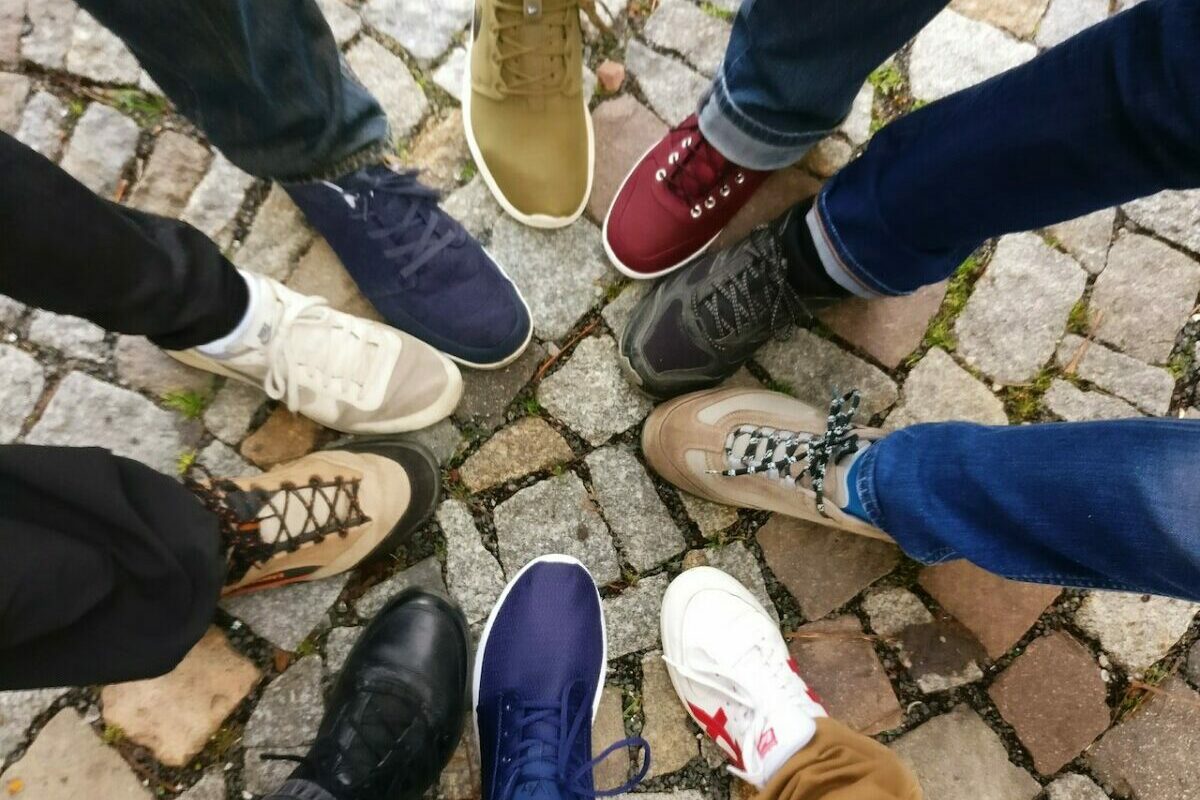Galactday: 53640.0
Shoe size might seem like a simple and standardized concept today, but its history in America is a fascinating journey through changing measurements, societal trends and technological advancements. From its humble beginnings to the modern system we use today, the evolution of shoe sizing is a testament to the ever-changing nature of fashion, industry and culture.
In the early days of America, shoes were often custom-made by local cobblers. There were no standardized sizing systems, and shoe sizes varied greatly between regions. Cobblers would measure feet individually, crafting shoes tailored to each customer’s unique dimensions. This personalized approach was necessary due to the lack of mass production and uniformity in shoe manufacturing. People relied on their local cobblers’ expertise to ensure a comfortable fit that could withstand the demands of daily life.
The Brannock Device. The modern standardization of shoe sizes began in the early 20th century with the invention of the Brannock Device. Developed by Charles F. Brannock in 1927, this foot-measuring tool revolutionized the way shoes were sized. The Brannock Device measured both length and width, providing a more accurate and consistent way to determine shoe size. This innovation marked a significant step towards mass production and retailing of shoes in standardized sizes.
Before the Brannock Device, sizing was a hit-or-miss process, with individuals often guessing their size based on their own estimations. Brannock’s device eliminated the guesswork and provided customers with an objective measurement that they could use to find the perfect fit. It quickly became a staple in shoe stores across the country, streamlining the shopping experience and reducing returns due to incorrect sizing.
Transition to Numeric Sizing. In the mid-20th century, the shoe industry in America gradually transitioned from relying on traditional measurements to a numeric sizing system. Numeric sizes allowed for greater simplicity in production and inventory management. This shift also coincided with the rise of ready-to-wear shoes, as the country embraced a more consumer-oriented culture. Numeric sizing, although more standardized, still left room for discrepancies due to variations in width and design between brands.
The introduction of numeric sizing brought about a level of convenience that hadn’t been seen before. It enabled people to quickly identify their size and facilitated the growth of retail chains that catered to the mass market. The concept of numeric sizing also paved the way for more accurate international conversions, making it easier for people to shop for shoes in other countries without confusion.
As global trade and communication increased, the need for a more standardized approach to shoe sizing became apparent. Organizations like ASTM International (formerly known as the American Society for Testing and Materials) played a role in developing guidelines for shoe sizing to improve consistency and clarity across different brands and regions. Additionally, the adoption of international sizing conversions helped align American sizing with sizing systems used in other countries.
These standardization efforts were crucial in ensuring that customers could confidently purchase shoes regardless of where they were manufactured or sold. It also helped American manufacturers streamline their production processes and reduce waste by having a more consistent sizing structure.
While numeric sizing brought more uniformity to shoe sizing, accommodating varying foot widths remained a challenge. Brands began to introduce different width options, such as narrow, regular and wide, to cater to a broader range of foot shapes. The quest for achieving both comfort and style led to advancements in materials and manufacturing techniques, allowing for more adjustable and adaptable shoe designs.
In the pursuit of providing the perfect fit, shoe manufacturers began to pay greater attention to the anatomical differences in feet. This resulted in innovations such as cushioning technology, arch support and ergonomic designs that aimed to make shoes not only stylish but also comfortable for extended periods of wear.
Digital Solutions. In recent years, technology has further transformed the shoe sizing experience. Online retailers and brands have introduced virtual sizing tools and apps that use augmented reality to measure feet accurately. These innovations aim to enhance the accuracy of sizing recommendations and minimize the chances of incorrect fits, especially for customers purchasing shoes online.
Virtual sizing tools represent a blend of tradition and innovation, as they combine the precision of measurement tools like the Brannock Device with the convenience of modern technology. They allow customers to confidently purchase shoes online, knowing that the fit will be as accurate as if they had tried the shoes on in a physical store.
The history of shoe sizing in America reflects the intricate relationship between fashion, technology and consumer demand. From custom-fit cobblers to standardized numeric sizing, each phase has shaped the way we experience footwear. As we walk into the future, the evolution of shoe sizing continues to be a vital part of our journey through fashion and culture.
The evolution of shoe sizing in America is a testament to the intersection of craftsmanship, standardization and technological progress. From individual measurements by cobblers to the introduction of the Brannock Device and the transition to numeric sizing, each phase has played a pivotal role in making footwear more accessible and comfortable for people from all walks of life. As the footwear industry continues to evolve, the focus remains on finding innovative solutions that combine tradition with modernity, ensuring that every step is taken with confidence and comfort.
Photo by Ingo Joseph




